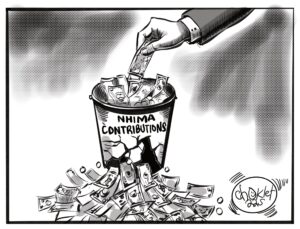Introduction
Zambia’s energy mix is predominantly hydropower-based, making up over 83% of the total capacity, followed by coal, diesel, heavy fuel oil, and solar. However, this reliance on hydropower poses significant risks due to the country’s susceptibility to extreme climatic events, such as droughts and floods. These challenges, coupled with increasing electricity demand growing at about 3% annually, underscore the urgent need for diversification. Efforts to address these issues have included signing multiple Power Purchase Agreements (PPAs) and encouraging greater Independent Power Producers (IPPs) participation. However, low electricity tariffs have hindered new investments, highlighting the need for tariff reforms to attract more private sector participation. Given these challenges, it is imperative to explore alternative energy sources to ensure a reliable and sustainable power supply. One such possible source is nuclear power which has been in existence since the 1940s and is now utilized by over 50 countries across the world. In this week’s Monday Opinion, we explore nuclear energy and Zambia’s readiness for a lip towards nuclear power plants.
Zambia’s Energy Sector
The energy sector in Zambia is a cornerstone of the nation’s economy, driving production across all industries. The sector has notable key players: Zambia Electricity Supply Corporation (ZESCO) Limited is the dominant player managing both generation and distribution of power in the country. The Energy Regulation Board (ERB) regulates the sector and Independent Power Producers (IPPs) produce and supply electricity to ZESCO, feeding the national grid about 20% of the electricity.
The sector has, however, been hit by several challenges which have affected the supply of electricity in the country. To begin with, Zambia’s reliance on hydropower— accounting for about 83% of national electricity, makes it vulnerable to extreme climatic events like droughts. This has become a reality in 2024, pushing ZESCO to electricity rationing due to lower generation capacity resulting from the low water levels in the Kariba dam which generates most of the power. In addition, ZESCO has often found itself in financial distress pushing it to acquire significant debt amounts. Partly because of the huge electricity imports acquired through emergency power contracts making the company pay higher prices than it will supply the electricity for in the country. Furthermore, with the demand for electricity growing at 3% annually according to the Zambia Development Agency (ZDA), the gap between demand and supply will only keep widening.
The Case for Nuclear Energy in Zambia
With hydropower facing climate change related risks, countries dependent on this form of energy must look towards other sources of energy if the increasing demand for energy is to be met. Nuclear energy can provide this alternative. currently, only one country in Africa utilises nuclear form of energy— south Africa. However, recently, a few other African countries have shown interest in adopting nuclear energy: These countries include Ghana, Egypt, Uganda and Burkina Faso among others. The shift towards nuclear power in Africa has been driven by several factors: The population of the continent is rising while access to electricity has been limited to only about half of the population. In addition, the forms of energy utilised such as fossil fuels and renewable energy are not very efficient and do not generate more power compared to nuclear energy.
For many years, Zambia has sought to diversify its energy sources. Despite substantial investment in hydroelectricity, it is evident that relying solely on this source is unsustainable. The Government, in the recent years, has indicated interest in exploring nuclear energy as an alternative. In 2020, the National Nuclear Policy was launched. The policy recognises that the country’s growing electricity demand, which necessitates an additional 2,500 megawatts by the year 2030, cannot be met by the current hydro-dominated sources alone. According to the policy, “Therefore, nuclear power plants offer an alternative source of sustainable renewable energy for production of electricity in Zambia”. However, little notable progress in this regard has been made since the introduction of the Policy.
Join me next week as we delve deeper into the concerns surrounding nuclear energy in Zambia, including the technical and economic feasibility of setting up nuclear power plants
About the Author
Ibrahim Kamara serves as the Head of Research at the Centre for Trade Policy and Development. He holds a bachelor’s degree in economics and finance as well as a master’s degree in public finance and taxation from the University of Lusaka. Ibrahim also served as the Coordinator for the Zambia Tax Platform until 2023.
























